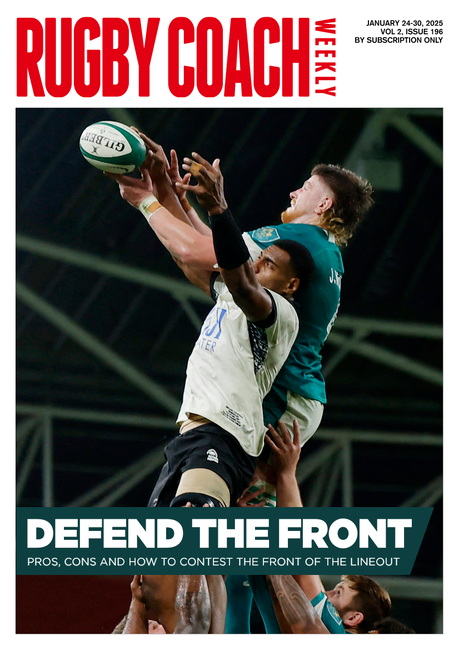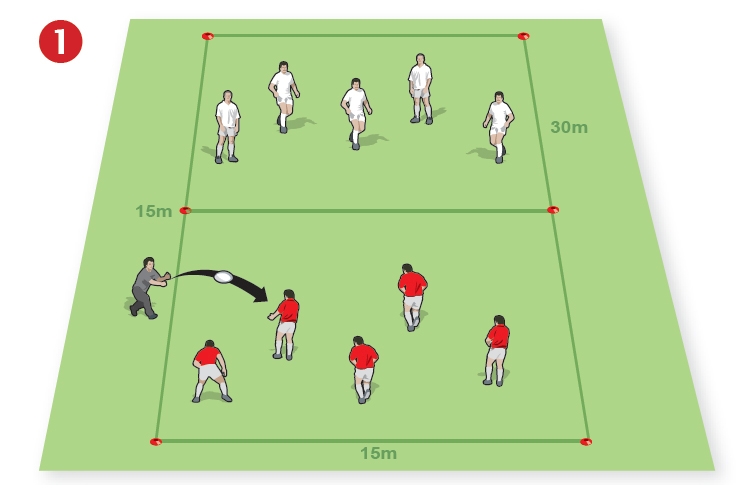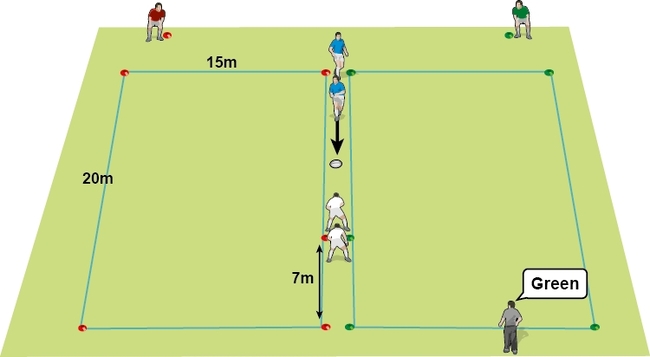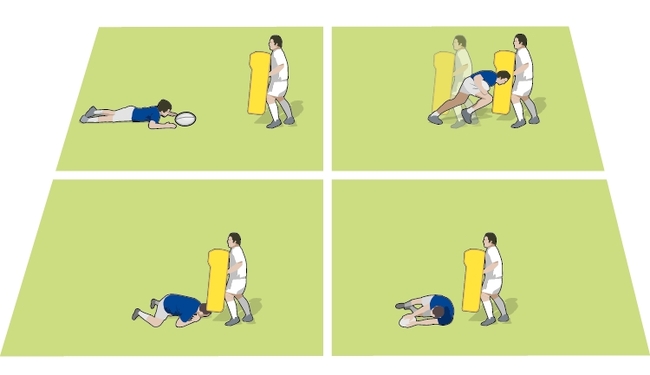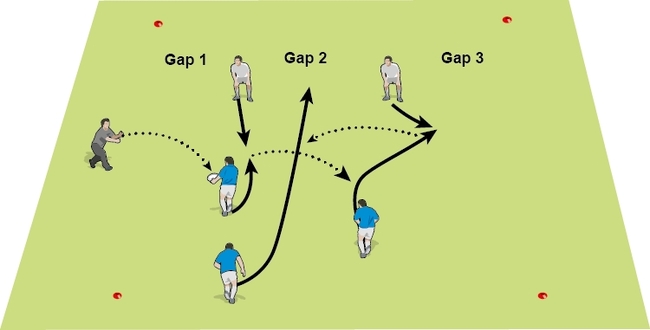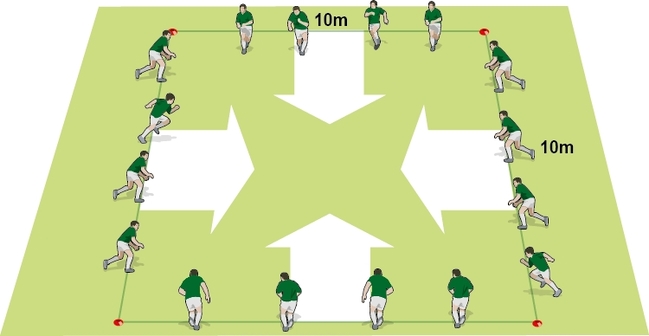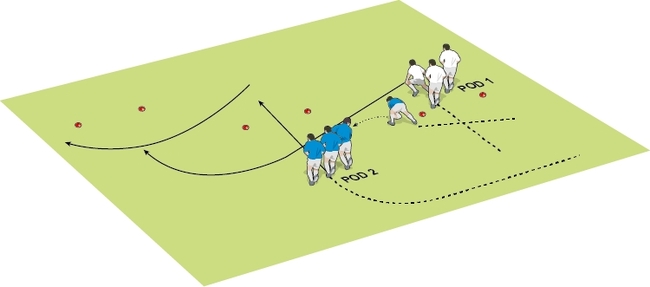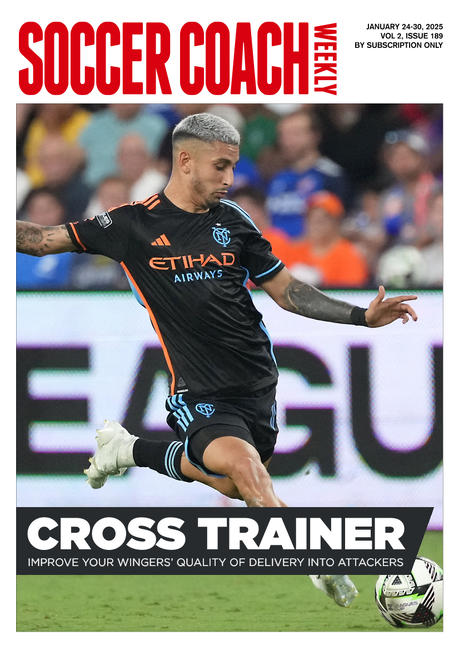Red zone madness rugby coaching session
Some teams call the area between the opponents' 22m line and try line the "red zone". In this area lineouts in particular will have a different objective – in attack passing the ball back 10 metres is not going to be as good as a catch and drive because the play is so close to the opposition try line.
Many teams struggle scoring tries from within the red zone. There are good reasons for this, not least the fact that defences are likely to be more tightly compacted, better organised and harder working near to their own line. Too often, though, the attacking team is also over eager and impatient.
Red zone madness training session
My Smart Sessions "Red zone madness" is an excellent way for training your players to be more patient, retain the ball and wait for their opportunities. These skills, of course, are transerable across the pitch and throughout the game.
What you tell your players the training session is about
- Building pressure on opponents by going forward and retaining possession near to their line.
- Converting more try scoring opportunities in the red zone.
What you tell your players to do
- Balance the risks and be patient. Scoring opportunities will come.
- Take territory in small stages. Don't let up the pressure.
- Support each other. Never take contact if there is no support.
What you get your players to do
Set up two 20 metre square boxes joined together along one side. A group of players move around in any direction in one box, passing between each other. When you shout "RED ZONE", the ball carrier moves into the next box. He then moves forward about 2 metres (adjust this distance according to the skills and ages of your players), before either going to ground or turning for support.
The first supporter reacts by driving over, or driving in, and the ball is presented to a second supporter. It is passed out, either one or two passes. The ball is again carried forward forward 2 metres. Ideally this happens seven to eight times before the ball is passed to a player who scores. Shout "TACKLE" every time the two metres is gained.

Developing the session
- You act as the line of defence, touching the ball carrier who then goes to ground.
- Dictate whether the ball from the breakdown is fast or slow. The players then have to make a decision about how to proceed.
- Add defenders and eventually tackling to ramp up the pressure.
A game situation
The rugby coaching session can be developed by playing a game of touch rugby where one team retains possession of the ball until it is knocked forward or a forward pass is made.
When touched, the ball carrier goes to ground immediately and the ball is passed away from the ground. Alternatively the ball carrier remains on their feet and a support player rips the ball off him and passes.
Develop the game with holding tackles and then full contact. The defence is not allowed to compete for the ball when it's on the ground.
What to call out to players in the game
- "Communicate where the gaps are."
- "Always go forward, but keep the ball."
- "Make flat passes close to the line."
- "Make shorter passes closer to the line."
- "Keep your depth in attack" (runners coming from deep are harder to stop).
What to look for
- Players getting close to the line and then throwing a long pass too far back and losing ground.
- Players passing to a static, upright player who loses ground or gets turned over in the tackle. Players must maintain low body positions close to line.
What to think about
- What is the maximum number of passes your side can perform under pressure?
- How can you most effectively suck in defenders to make space for runners?
- Do you want to ruck and maul?
- What do you want your scrum half to do?
- What backs moves can you use in the red zone?
- At what stage do you want to give the ball to the backs?
- And for senior sides only, how might "squeeze ball" be used?
Discover more innovative coaching ideas with my "grab-and-go" with my Smart Sessions training plans. Available in two versions - Core and Advanced - these "off-the-shelf" coaching solutions are now available at the trial price of 97p for 8 issues.
Click here to read more and to join Smart Sessions today.
Newsletter Sign Up
Coaches Testimonials

Gerald Kearney, Downtown Las Vegas Soccer Club

Paul Butler, Florida, USA

Rick Shields, Springboro, USA

Tony Green, Pierrefonds Titans, Quebec, Canada
Subscribe Today
Be a more effective, more successful rugby coach
In a recent survey 89% of subscribers said Rugby Coach Weekly makes them more confident, 91% said Rugby Coach Weekly makes them a more effective coach and 93% said Rugby Coach Weekly makes them more inspired.
Get Weekly Inspiration
All the latest techniques and approaches
Rugby Coach Weekly offers proven and easy to use rugby drills, coaching sessions, practice plans, small-sided games, warm-ups, training tips and advice.
We've been at the cutting edge of rugby coaching since we launched in 2005, creating resources for the grassroots youth coach, following best practice from around the world and insights from the professional game.


